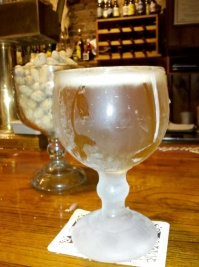My boy can read. He’ll be entering kindergarten in the fall and though there were a handful of students who could read at his preschool, they were not mine. I’m not bragging—even posting this might be unseemly—but here’s the thing: I’m fat, unemployed, underpublished, and I have more hair on my back than my head. My son reading is the proudest moment of the year.
Like baldness and fatness, learning to read doesn’t happen all at once. You don’t wake up one morning to discover that your penis has disappeared under your belly; it’s a slow, gradually foreboding shadow. Reading is the opposite: a growing light.
He started with letters, of course, and letters are nothing more than symbols that make sounds. The collection of letters that constitute words are more fluid sounds. Sentences then, especially when he’s staggering through them, are songs. What a joy to see language transform in the eyes of a pre-reader to the voice of a reader. Despite its ubiquity, the melody of words takes years to string together. This small phenomenon—learning how to read and the observation of it—shows how complex reading is. I used to entice him to read by saying it unlocks the secrets of the universe: now that he’s reading I no longer feel like I’m bullshitting him.
About two years ago he “read” his first book: Go Dog, Go! Then came Because a Little Bug Went Ka-Choo. He memorized them based on the pictures. Then he made up stories to go along with pictures in other books, same thing his sister is doing now. Both kids have been read to in the womb, every afternoon and night, and letters have always been around. We’ve been doing a sight word flash card game for a few months now, where he gets bonus points for finding a rhyme or using it in a sentence. Letter and word cognition were taught in preschool. The true engagement we have with reading comes from good stories.
Favorites are any Mo Willems, from the Pigeon to Knuffle Bunny to Elephant and Piggie, the wordplay of Dr. Suess and P.D. Eastman, and superheroes distilled into Learning to Read books. Over the past few months, the boy has demanded we read and reread (third time in as many months) the nine-book epic graphic novel series, Bone, by Jeff Smith. The letters are all caps, the narrative is obvious on the page, and the tone of the dialogue can be discerned through the awesome illustrations. He wanted to know what the characters are saying, I think, so he could escape into that world by himself. The enjoyment was shared by us—in the first two cycles, at least. How cool to be turned on and tuned in to the same stories, to be sharing those songs.


#1 by Keith Kappel on 06/13/2011 - 3:50 PM
Ah, Bone. Comic books, a subject near and dear to my heart, are an American institution when it comes to learning how to read. Granted, the words + pictures formula applies to most children’s books (which does technically make them comic books, according to Scott McCloud’s definition of comics as “Sequential Art” in his epic examination of the form, Understanding Comics). If you are interested in other recommendations for children’s comics that, like Bone, are considered to be of the utmost quality, I would suggest The Return of the Dapper Men and anything Mouse Guard from Archaia Comics.
Of course, if he is getting into a superhero phase, Marvel Adventures is a line of kid-friendly comics featuring their most popular heroes, and DC has similar books tied into their cartoon series.
#2 by Robert Duffer on 06/15/2011 - 4:30 PM
Insightful, Kappel, though I think the comic is more sophisticated in terms of how the layout employs literary devices like vantage pt and pov. Not that you said it wasn’t. He is in superhero phase; Tornado Man has been supplanted by Lava Man. Thanks for the tips–will check those out.